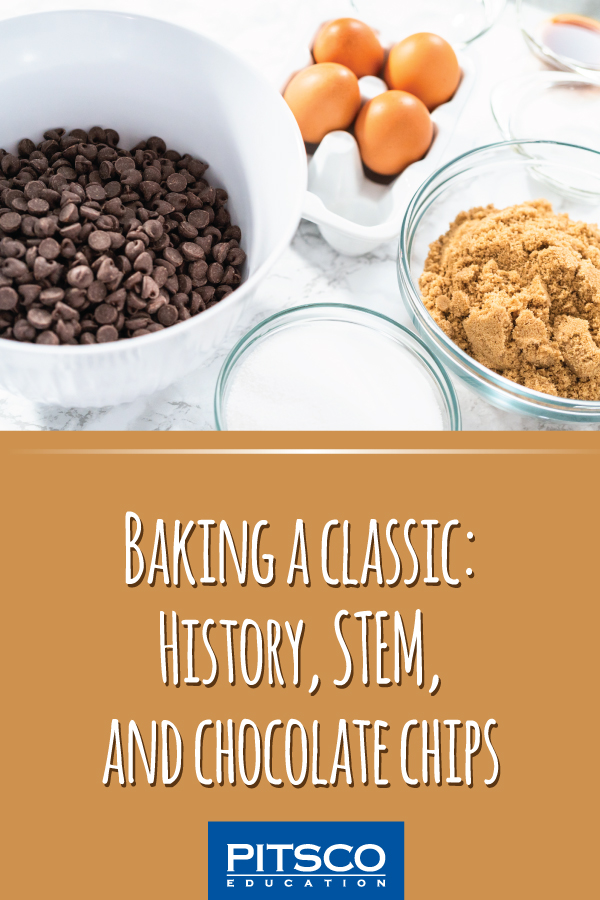Updated 6/12/24
There are few things as nostalgic and comforting as a classic chocolate chip cookie. That much most people agree on . . . but everything else about this favorite well, that’s up for debate.
Chocolate Chip History (or Lore)
If your grandma baked you chocolate chip cookies when you were a kid, chances are you enjoyed the traditional Nestle® Toll House® recipe. And, it’s a go-to in many kitchens still to this day. It was invented in Ruth Wakefield’s kitchen of the Toll House Inn in Whitman, MA, in the 1930s.
The story goes: she ran out of baker’s chocolate (or nuts, depending on the source) for her popular Butter Drop Do cookies, which were typically served with ice cream, so she chopped up a semisweet chocolate bar as a replacement. And they were a huge hit from that point forward. They became known as Toll House Chocolate Crunch Cookies and were included in Ruth’s cookbook, Toll House Tried and True Recipes, and even shared on the Betty Crocker radio show. Eventually, Wakefield reportedly sold her recipe to Andrew Nestle for one dollar and a lifetime supply of chocolate, plus the inclusion of her recipe on the back of chocolate bars and eventually on the back of the bags of Nestlé morsels (not chips). The morsels were created and first sold in 1940. The Toll House Cookie recipe on the back of the bags today is nearly identical to the original.
Now, the other side of the story is that Ruth was an experienced baker. Some historians and experts believe she knew exactly what she was creating and would have developed this recipe with diligence and much testing.
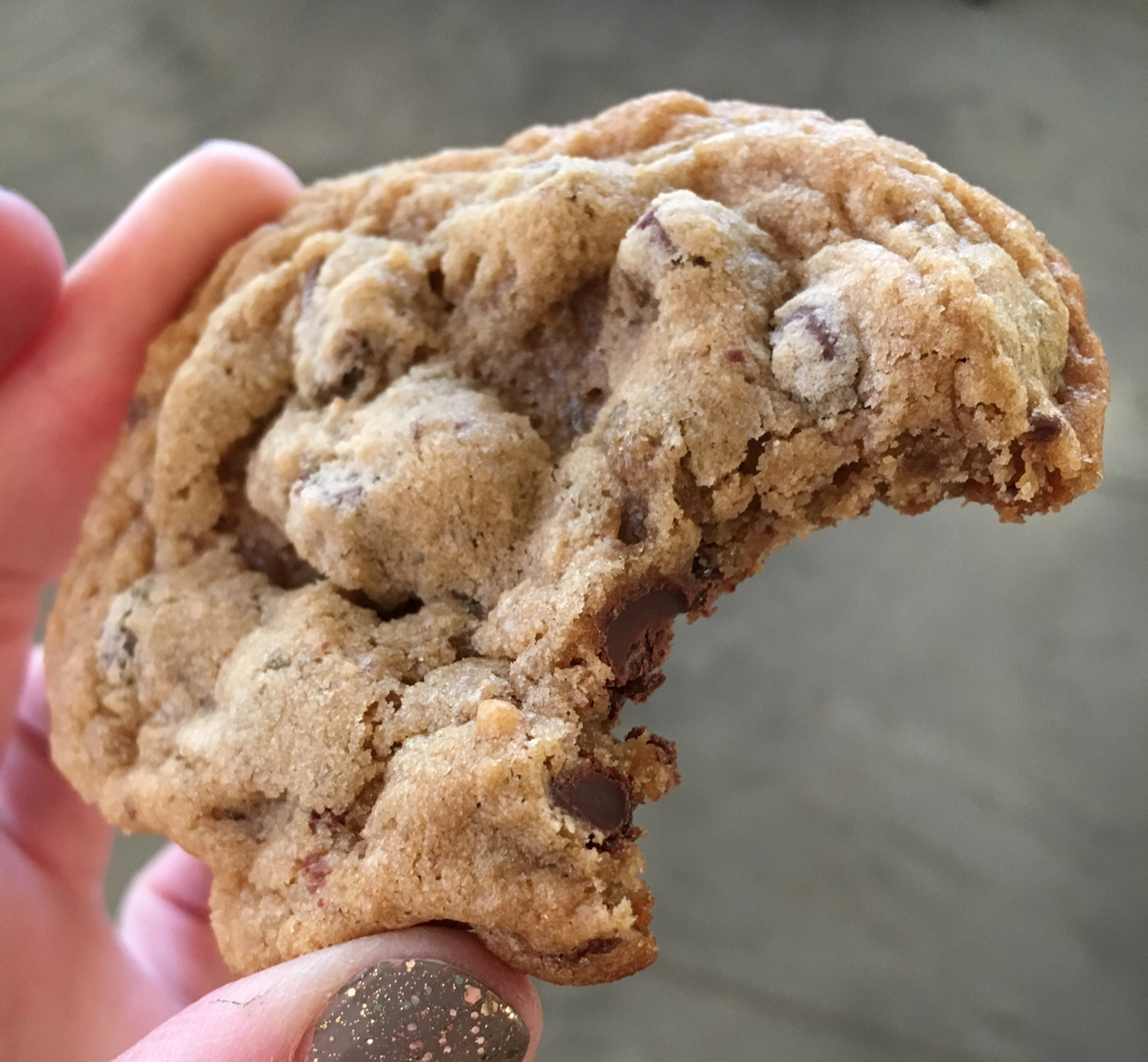
Either way, I’m thankful Ruth created this piece of Americana, because in my family, and probably yours too, Toll House Cookies are those of legend.
Now that we’ve established who “invented” this cookie, we should chip into a bit more history that might help explain its enduring popularity.
After World War II, some, like writer Carolyn Wyman, say the cookie rivaled apple pie for our hearts and taste buds. The New Yorker explains “In the postwar years, the chocolate-chip cookie followed the path taken by many American culinary innovations: from homemade to mass-produced, from kitchen counter to factory floor, from fresh to franchised. In the 1950s, both Nestlé and Pillsbury began selling refrigerated chocolate-chip-cookie dough in supermarkets. Nabisco, meanwhile, launched Chips Ahoy, its line of packaged cookies, in 1963. The Baby Boom generation, which had been raised on the Toll House cookie, sought to recapture the original taste of these homemade treats in stores that sold fresh-baked cookies. Famous Amos, Mrs. Fields, and David’s Cookies all opened their first stores in the ‘70s, and prospered in the ‘80s. By the middle of that decade, there were more than twelve hundred cookie stands in business across the country. Also in the ‘80s, Ben & Jerry’s introduced Cookie Dough Ice Cream.”
And now, even in a new century, we’re still fixated with the likes of Crumbl Cookies, who claim to have the “world’s best chocolate chip cookie,” thanks in part to copious testing inspired by their software development backgrounds; or Insomnia Cookies, who boast hot, fresh cookies well into the wee hours of night.
It’s safe to say we love our chipped cookies.
So, Why Don’t Chocolate Chips Melt?
Guittard, Ghirardelli, Valhorna, Hershey, Nestlé . . . all top makers of the chips or morsels, and by either name, they are critical to the chocolate chip cookie. They are the pockets of chocolate studded throughout. The good stuff that has us craving more than a single cookie. But, have you ever wondered why you don’t just have a chocolate cookie – why the chips don’t melt during the baking process? It seems like magic, but science helps us understand this trick.
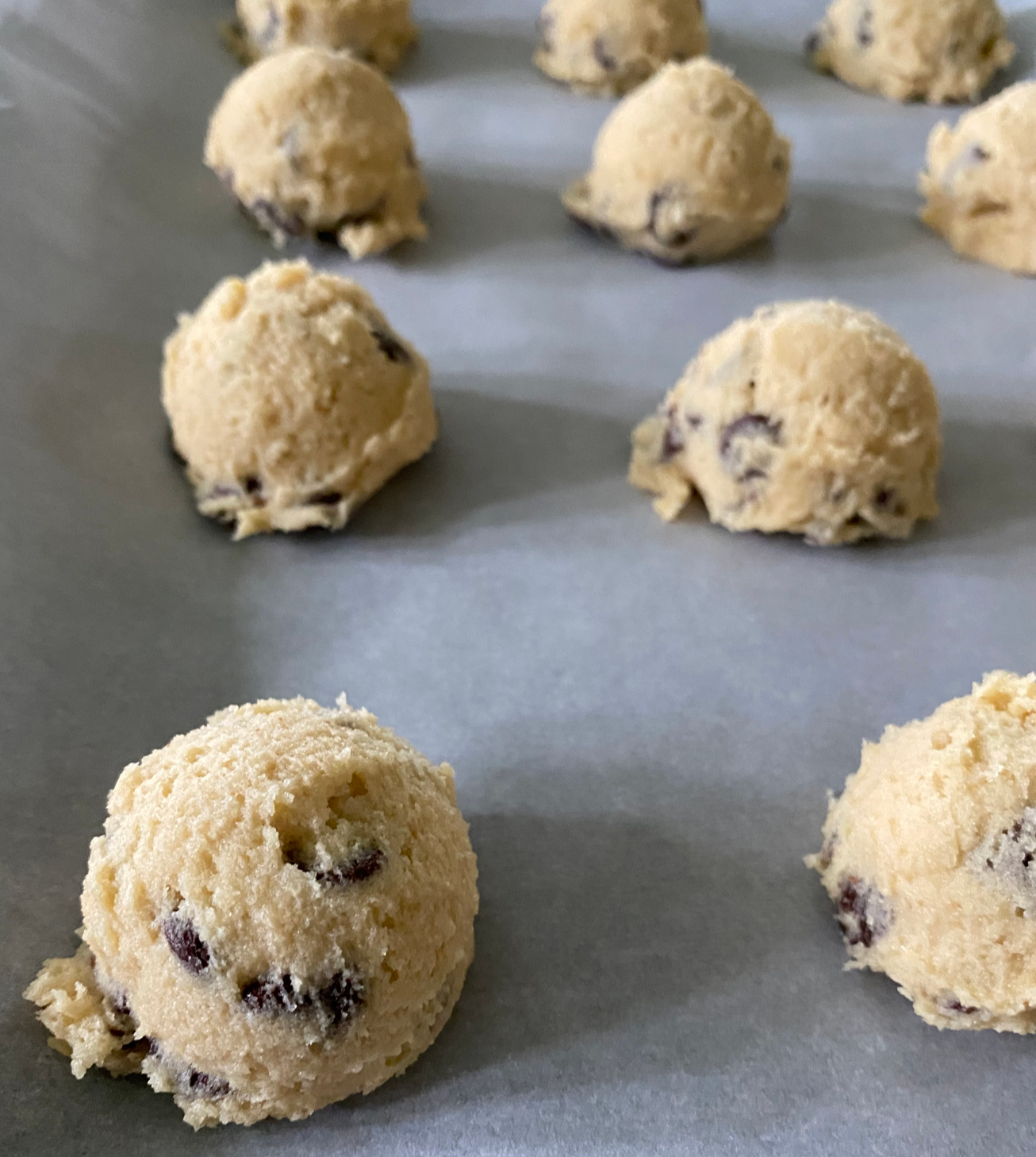
We can’t say it better than this explanation from Mental Floss.
“Unlike baking chocolate, chocolate chips differ in that they tend to have a lower amount of cocoa butter, which makes them more resistant to heat. Some chips also have stabilizers and emulsifiers like soy lecithin to help them maintain their shape – the chips are essentially engineered to resist attempts to turn them into liquid. Chips like Nestlé’s Morsels do, in fact, melt when baked. But because the cookie dough has firmed up around them, the chips retain their shape. After the cookie has cooled, the chocolate solidifies once more, giving the appearance of a chip that has been unaffected by the heat.”
What Is the BEST Chocolate Chip Cookie Recipe?
If you were to Google “best chocolate chip cookie recipe” right now, you would get an estimated 105,000,000 results. That’s one-hundred-million-plus options and variations. Even Cookie Monster can’t handle that . . . oy!
So, what makes a recipe the “best”? Let’s start with cookie basics. Watch the illustrated TED Talk The Chemistry of Cookies. BuzzFeed also has a great piece that gives you your cookie PhD, and King Arthur Flour and Serious Eats’ Food Lab have their takes on similar content.
Ultimately, your cookie successes (and preferences) revolve around the following elements:
Butter: Key to Flavor, Shape, and Texture
Some recipes will contend you can use shortening or margarine as a substitute for butter. But for many, butter is non-negotiable. Butter has water, fat, and proteins. These are the building blocks of flavor, shape, and texture.
- Some recipes have you cream softened butters, others might have you use melted. But the bottom line is more butter = more spread = more tenderness.
- Melted butter as opposed to creamed butter gives a denser, shorter/flatter cookie; the water isn’t trapped in the butter and more gluten can form, which results in a chewier and crispier cookie.
- Creaming butter leads to more air in the dough and less gluten formation because the water is trapped in the intact fat, which leads to a more cake like cookie.
- The milk proteins in the butter brown, providing the nutty, toffee characteristics we love.
Sugars: Key to Texture, Sweetness, and Color
King Arthur Flour has a whole article about the difference sugar can make in your final cookie. Adjusting either the type or the amount matters. Serious Eats Food Lab also has a more in-depth assessment on the chemistry of sugar to build understanding.
- Brown sugar creates a reaction with the leavener, and it provides more moisture, more chew, more rise, and more butterscotch, toffee flavor.
- Granulated sugar provides a crisper, flatter, sweeter cookie. The granulated sugar isn’t acidic and won’t cause any rise or retain moisture.
- “A mixture of brown sugar and granulated sugar is ideal because brown sugar adds rise, but granulated sugar makes the cookies spread before they get too cakey.”
Leavener: Key to Texture and Lift
When you cream butter and sugars, you introduce air into your dough through mechanical leavening, which gives lift to your dough. But most recipes also call for some type of baking powder or baking soda, which help add height and shape to the cookies.
- Baking soda has been the standby for many recipes. It is a chemical leavener that reacts with acid; this generally comes from the brown sugar you’ve used.
- Baking powder has both baking soda and an acid such as cream of tartar. This is often included to create taller, cakier cookies.
Flour: Key to the Structure and Affects Texture
Gluten creates the structure of the cookie. Even though baked goods such as bread have way more gluten than cookies do, without it we’d have a sweet, greasy, unappealing mess. You can use almost any kind of flour to create a cookie, but the type you use changes your end product.
Cake flour will give you a taller, cake like cookie because there’s less protein in it. Bread flour is high protein, which means more gluten formation and a chewier cookie. All-purpose flour is kind of your middle ground; it allows moderate gluten formation and a pretty standard cookie shape and chew.
Also, how your flour is incorporated into the wet ingredients affects your final outcome. The more the dough is worked, the tougher your cookie and the smoother your cookie top. There is a delicate balance – a just-enough point for mixing dry ingredients.
Eggs: Key to Structure and Moisture
Chocolate (Chopped vs Chips): Key to Chocolatey-ness
Semi-sweet is the standard for most chocolate chip cookie recipes, but there are options. Dark, milk, and bittersweet are all on the table.
- Since morsels/chips became available, that’s what is most commonly used and readily available in markets. The chips hold their shape as we learned earlier and generally can be dispersed more evenly.
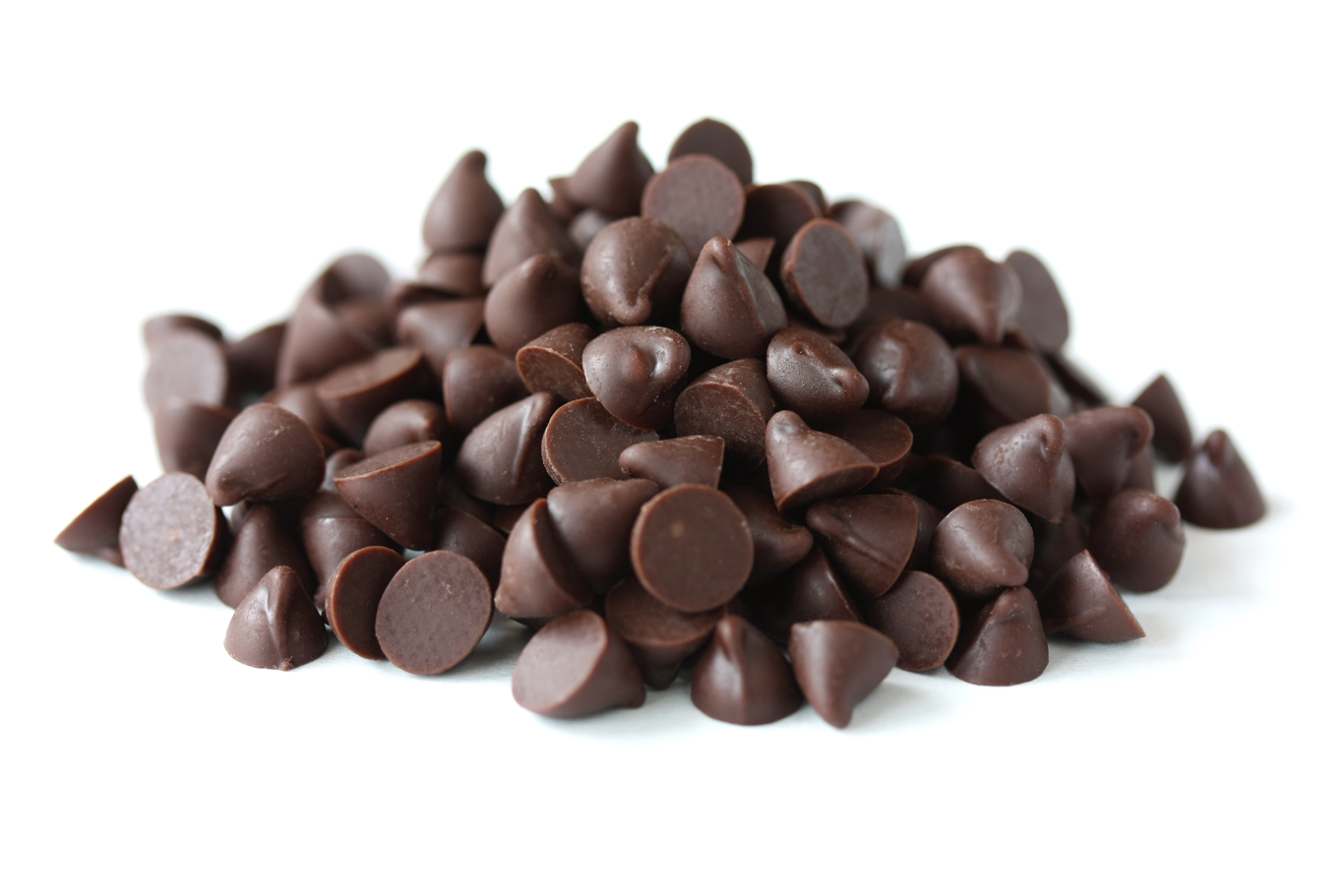
- Chunks, packaged or hand-chopped, are bigger version of chips, which means larger pockets of chocolate. Also, chopping your chocolate by hand could mean large and little bits of chocolate in the mix, possibly leading to a more melted chocolate feel.
- Wafers or discs are also options and typically create layers or pools of chocolate.
And, the ratio of chocolate to dough – that is a thousand-percent subjective. Truly, it’s up to the baker!
Temperature: Key to Color and Shape
BAKING TEMPERATURE – If you watched the TED Talk, you heard mention of the Maillard Reaction. This is chemical process that creates the caramel, golden color in baked/cooked foods. To be very specific, “The Maillard reaction is many small, simultaneous chemical reactions that occur when proteins and sugars in and on your food are transformed by heat, producing new flavors, aromas, and colors.”
The milk proteins in the butter, the proteins in the flour, the sugar, and the eggs all brown to some degree. Time, temperature, and moisture are required for the browning to occur. The TED Talk shared that this happened at higher than 350° F likely about 365° F but it can happen at lower temperatures, with longer time or in different conditions.
Serious Eats sums it up: “When baked at a lower temperature, the dough has more of a chance to spread out, leading to flatter, wider cookies. Conversely, cookies baked at higher temperatures spread less. Even a difference of as little as 50°F makes a big difference.”
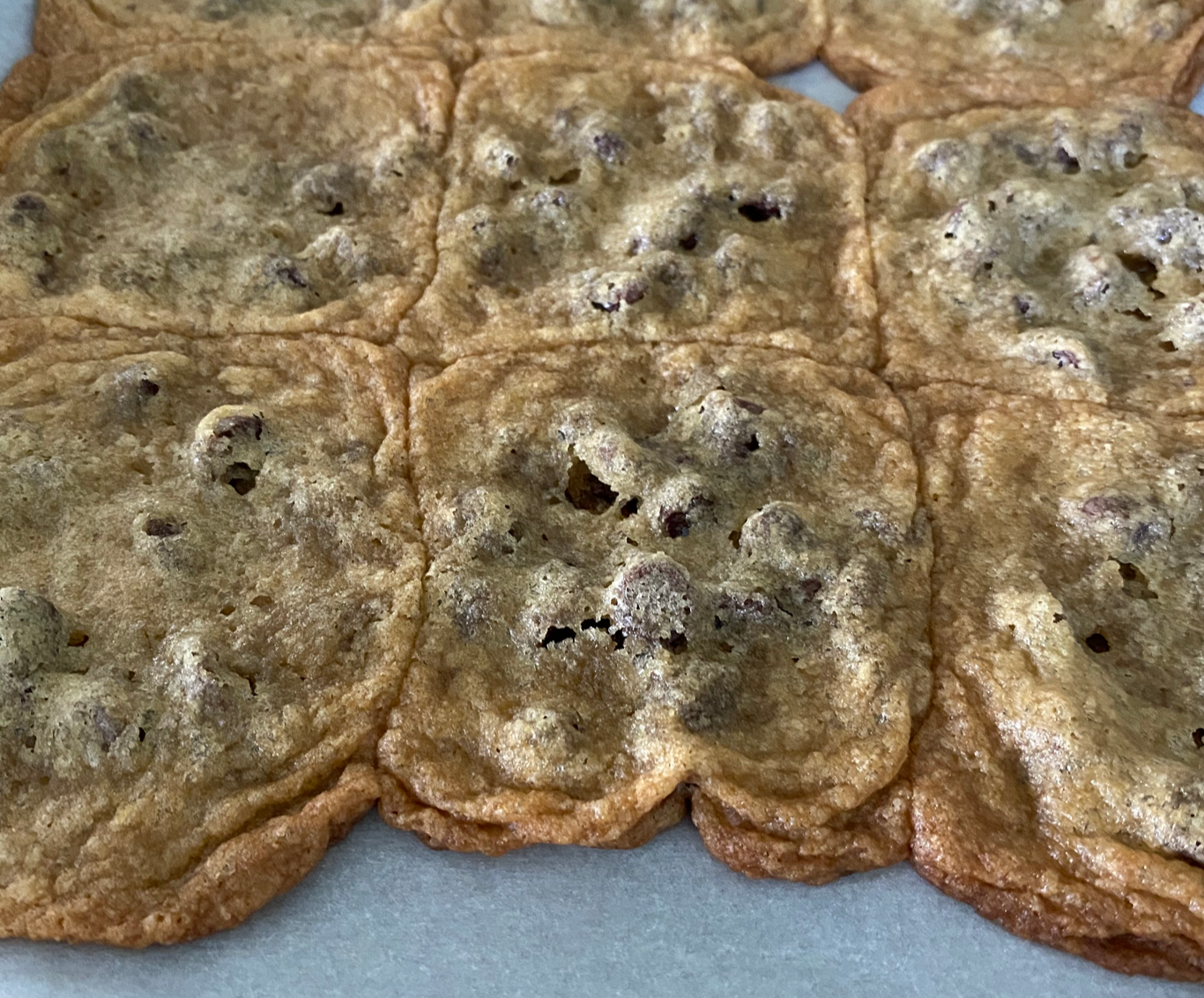
DOUGH TEMPERATURE: Again, Serious Eats serves up the knowledge: “Warmer Dough = Wide Cookies, Cooler Dough = Compact Cookies”. If you’ve ever baked cookies that turned into a single blob, you’ve seen this principle in action. And now you’ll know why – your dough was too warm. Which leads us to the last point. . . .
Chill Time: Key to Depth, Color, and Shape
Many recipes will tell you to chill the dough. If you’re like me, and a recipe includes that instruction, I consider finding another recipe or throwing caution to the wind and skipping the step because waiting when you want cookies now – that seems impossible.
I must concede, the waiting/resting time really does make a difference. Chilling the dough means the cookies will spread less because it takes longer to heat up in the oven. And, per BuzzFeed, “large flour and sugar molecules break down overnight, which gives them a jumpstart on browning the next day. This means your cookies will have deeper brown sugar and caramel flavors after an overnight rest.” And, Serious Eats goes as far as to say “an overnight rest leads to superior flavor.”
Finding the STEM
Even now, with all your newfound knowledge, you’re still going to have to do a little kitchen science to determine the BEST chocolate chip cookie for your palate. To help you, we do have a handful of recipes to guide your studies.
- The classic: Nestlé
- Soft and thick: Sally’s Baking Addiction
- Thin and crispy: Serious Eats
- Thick and cakey: Copycat Levian Bakery Cookies from A Bountiful Kitchen
- Extra chocolatey: Cookies and Cups
- Made with shortening: Crisco
- The infamous: DoubleTree by Hilton
- New popularity and with less butter: Joanna Gaines’ Magnolia Table Cookbook
- The extensively researched: Serious Eats Food Lab
Luckily, you can call all of this rigorous baking and taste-testing “research” 😉.
That’s a little flippant. But in earnest, your kitchen is stocked with STEM lessons. How the mixer you’re using works – that’s engineering, simple machines, mechanics, electricity, and technology all together. Measuring ingredients is the ultimate hands-on math. It’s critical thinking in action when something in the process goes wrong. Practicing procedural and organization skills are a recipe come to life. And as for science, well that runneth over.

If you want to double down on the classics, be sure you’ve stocked up on some cold milk. (And why that phenomena is a favorite, well, that’s a kitchen chemistry topic for another time. . . but if you’re interested, you can dunk into it.)
Have a different go-to recipe or your own spin on one of these? If it’s not your secret family recipe, share it with us in a comment. The more cookies, the merrier (and sweeter).
MORE RESOURCES:
- Mining for Chocolate Chips activity
- Chocolate-covered learning: 7 STEM activities for kids
- A Chocolate Chip’s State of Matter
